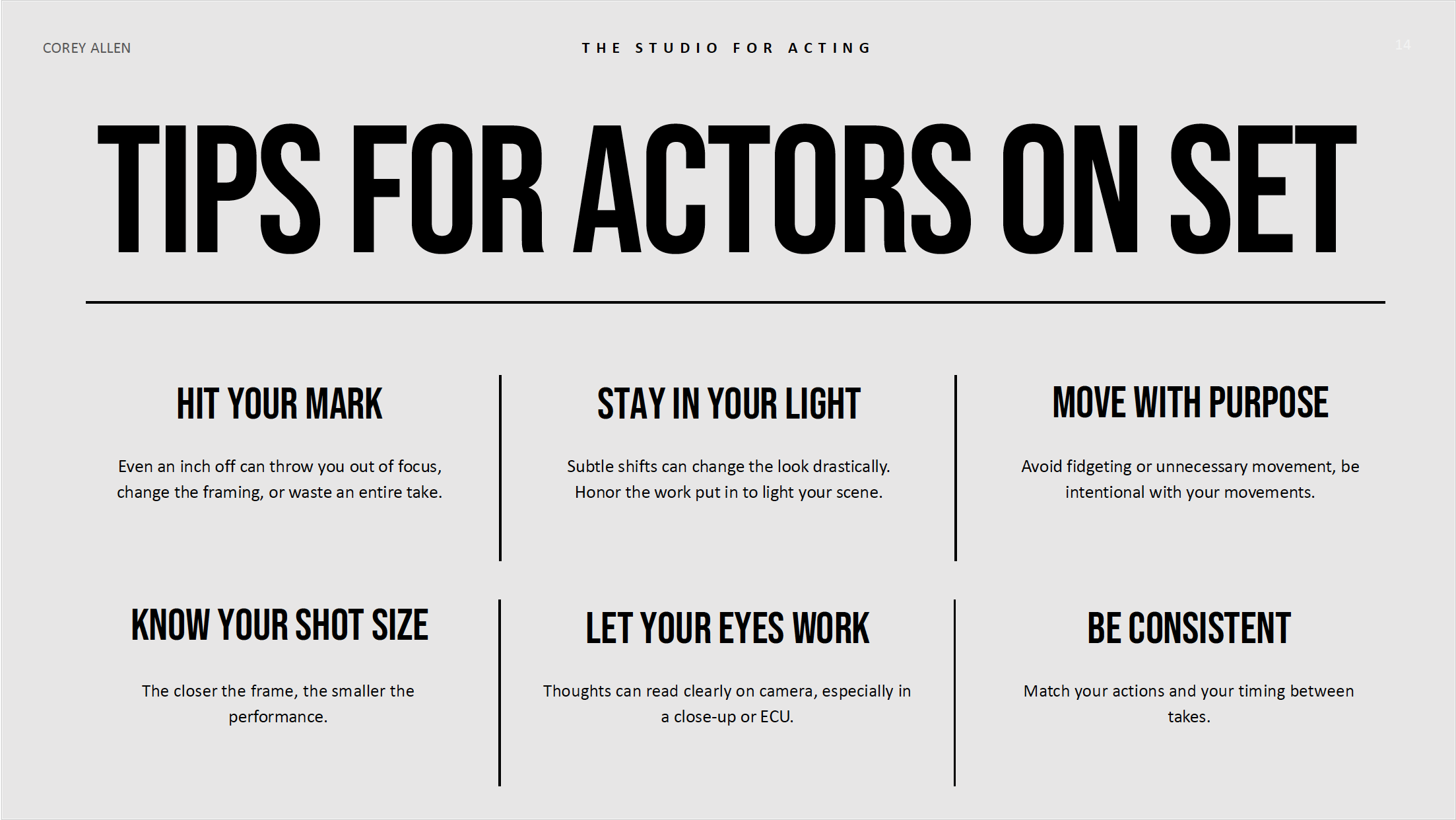
Acting for Camera
Overview
I originally put this topic together for an Acting For Camera class that I help teach from behind the camera. The original presentation in PDF form is available at the end.
Today, we’re breaking down how a film scene gets shot, what happens before, during, and after the camera rolls from the perspective of an actor. Understanding this helps you anticipate what’s next, stay ready, and be a better collaborator on set.
Film sets operate like machines, timing and rhythm matter. Everyone has their job. As actors, your role is one of the most visible but often involves a lot of waiting before action.
Four key concepts to be aware of include:
When working on a film or television set, there are several important aspects of the production process that actors need to understand in order to be successful. Key concepts like crew call time, set preparation, shooting scenes out of order, and the reality of long waiting periods all directly impact an actor’s experience and performance. Having a strong grasp of these fundamentals helps actors stay professional, adaptable, and ready to deliver their best work when the camera is rolling.
Crew Call Time — Crew call time is the designated time when all cast and crew must be on set, ready to work. Understanding call times is crucial because it ensures the production stays on schedule and demonstrates an actor’s professionalism.

Aspect Ratio Cheat Sheet
Choosing the right aspect ratio is essential for achieving the perfect cinematic look, and now it’s easier than ever with this Aspect Ratio Calculator. Whether you’re shooting video, designing graphics, or prepping a gallery exhibition, this easy dropdown menu quickly shows you the best aspect ratio options based on your selected resolution.
What is an Aspect Ratio?
An aspect ratio defines the relationship between the width and height of an image or screen. Common choices like 16:9 (widescreen) or 4:3 (standard television) dramatically impact how a story feels visually.
A Brief History of Notable Aspect Ratios:
4:3 (1.33:1): Once the dominant format for early cinema and television, seen in classics like The Wizard of Oz(1939).
16:9 (1.78:1): Standard for HDTV and streaming content today, perfect for YouTube, Netflix, and broadcast TV.
Read more to view the full table.

Focal Length Conversion
When switching between camera systems, it’s important to understand how lens focal lengths translate across different formats. The table below shows how common 35mm (full-frame) lens focal lengths compare to medium format systems like 645, 6x6, and 6x7.
For example, a 50mm lens on a 35mm camera gives a similar field of view as a 75mm lens on a 645 format, an 80mm on 6x6, or a 100mm on 6x7. As the format size increases, you’ll need a longer focal length to achieve the same framing and perspective.
This conversion is crucial when planning for portrait, landscape, or travel photography across different types of cameras. Understanding these equivalents helps ensure you get the composition you expect, no matter the gear you’re using.
Lens Equivalents for Various Formats
Full table available, read more.
